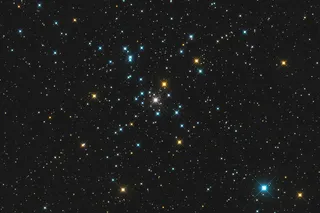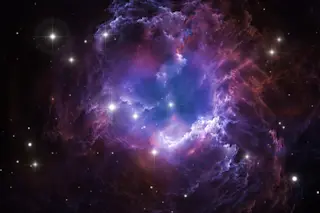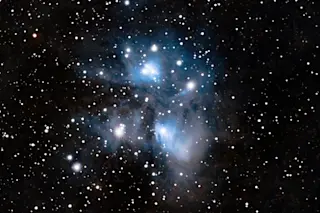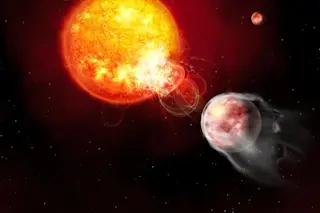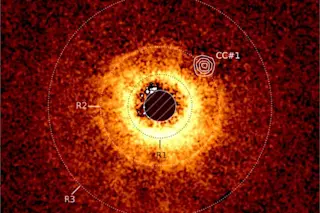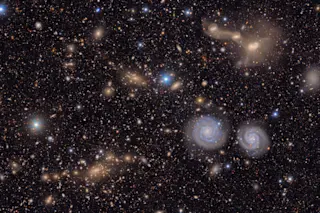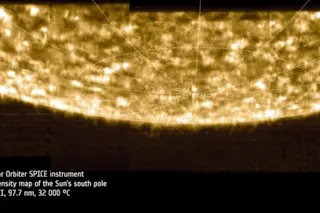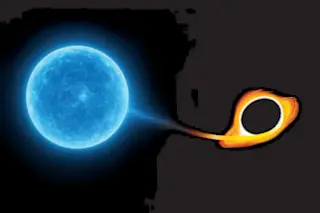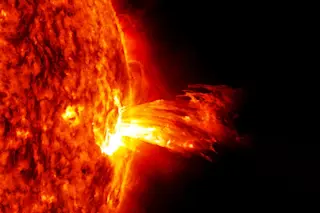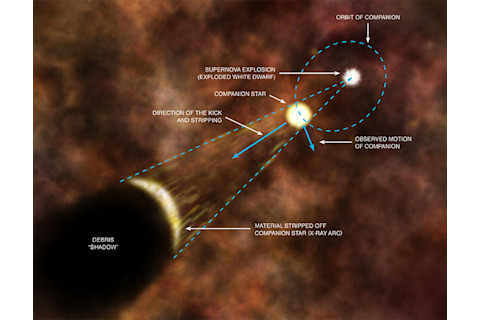
What's the News: Astronomers have known for a while that white dwarfs can sometimes ignite in massive explosions known as Type Ia supernovae, but they haven't been sure what pulls the trigger. One theory says that the explosion occurs when two white dwarfs merge into each other, while an opposing theory says that it happens when a single white dwarf pulls material from a Sun-like companion star. Using the Chandra X-ray telescope, astronomers have discovered an arc-shaped material emitting X-rays in the Tycho supernova that gives hints about the supernova's origin. "This stripped stellar material was the missing piece of the puzzle for arguing that Tycho's supernova was triggered in a binary with a normal stellar companion," says Fangjun Lu. "We now seem to have found this piece." How It Happened:
A white dwarf and Sun-like companion star orbited each other so closely that the white dwarf stripped material off its companion, triggering a Type Ia supernova.
The supernova blew some material off from the companion star, and the resulting highly energetic, X-ray-emitting material can now be seen in the shape of an arc that is oriented differently from all other features near the supernova remnant. The double-white-dwarf theory is unlikely in this case because if two white dwarfs created a supernova, astronomers wouldn't expect to find this free-flying material.
The explosion also gave a mighty push (or "kick" in the image above) to the companion star, which is now hurtling elsewhere through space.
What's the Context:
Past studies using optical telescopes have shown that there's a star within the Tycho supernova remnant, but it wasn't clear whether it was a companion star to the exploded white dwarf. The discovery of the arc-shaped X-ray explosion suggests that the Sun-like star is indeed a companion star.
The Tycho supernova is named after Danish astronomer Tycho Brahe, who observed the supernova in 1572.
Because of their reliable brightness, Type Ia supernovas are used to calculate the expansion of the universe, and in turn provide information about dark energy, which is thought to drive the expansion.
By measuring properties of the arc-shaped X-ray emission and potential companion, the astronomers also calculated that the stars had an orbital period of 5 days and were just a millionth of a light-year from each other (less than a tenth of the Earth-Sun distance) at the time of the explosion.
In recent years, astronomers have witnessed "light echoes" from the 16th-century supernova.
Not So Fast: This circumstantial evidence only appears to rule out the double-white-dwarf theory for the Tycho supernova; it doesn't mean that merging white dwarfs don't trigger some other Type Ia supernovas. Reference: FJ Lu et al. "The Single-degenerate Binary Origin of Tycho's Supernova as Traced by the Stripped Envelope of the Companion." Astrophysical Journal. 732(1) 11 (2011 May 01) DOI: 10.1088/0004-637X/732/1/11Image: NASA/CXC/M.Weiss


